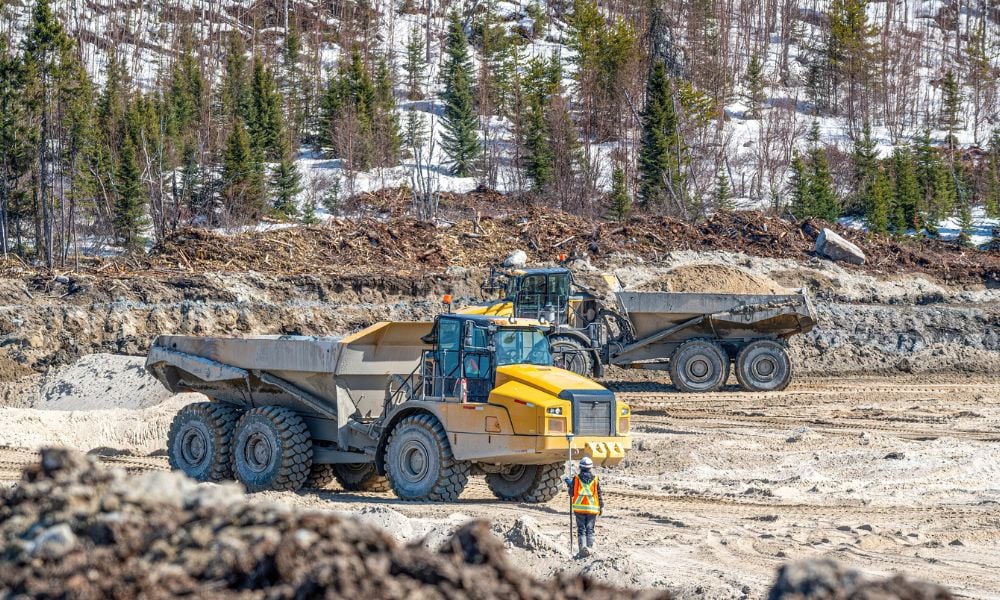In 2024 and beyond, the mining sector in Canada has evolved into a situation where the industry must do more than contract with impacted Indigenous groups for specified economic benefits. Lawyers say it is essential that miners forge and maintain highly communicative and culturally integrated relationships to sustain the social license for long-lasting projects.
The Truth and Reconciliation Commission of Canada’s (TRCC) Call to Action #92 calls on businesses operating in Canada to apply, as a “reconciliation framework,” the United Nations Declaration on the Rights of Indigenous Peoples (UNDRIP) to operations involving Indigenous peoples, their lands, and resources. This involves a commitment to “meaningful consultation, building respectful relationships, and obtaining the free, prior, and informed consent.” It also involves ensuring that Indigenous people achieve “long-term sustainable benefits for economic development projects,” including through “equitable access to jobs, training, and education opportunities.”
Leanne Krawchuk, national leader of Dentons Canada’s corporate group, says that as the duty to consult developed in the common law, different terms have emerged describing the agreements with Indigenous groups. These have progressed from impact benefit agreements, consultation agreements, and reconciliation agreements to mutual benefit agreements. Historically, she says, the agreements were more likely to involve short-term financial benefits for short-term development goals. Now, the focus is on longer-term benefits and how the agreement can achieve sustainability and benefit future generations.

Leanne Krawchuk
Part of this shift is focusing on First Nations taking equity ownership in projects and ensuring access to low-cost capital for this purpose.
In 2019, Alberta created the Alberta Indigenous Opportunities Corporation (AIOC), which supports Indigenous investment in natural resources, agriculture, telecommunications, and transportation projects with up to $3 billion in loan guarantees.
On July 30, TC Energy announced it had signed an equity interest purchase agreement with an Indigenous-owned investment partnership composed of 72 Indigenous communities backed by a $1 billion equity loan guarantee from the AIOC. These communities will take a 5.34 percent stake in Canada’s longest natural gas pipeline. TC Energy said this is the country’s largest Indigenous equity ownership agreement.
Another source of capital for equity investment is the First Nations Finance Authority, a statutory non-profit operating under the First Nations Fiscal Management Act, which provides capital planning advice and long-term loans. The authority is not a Crown agent and is governed by First Nations borrowing members.
In November 2023, Canada Infrastructure Bank (CIB) launched an Indigenous Equity Initiative to provide capital for Indigenous-owned equity stakes. In March, CIB announced a $100 million loan participation agreement with the First Nations Bank of Canada.
Sarah Powell says mining clients are “building out and enhancing” impact benefit agreements because, without Indigenous communities on board, the company will have a “real uphill challenge” getting a project approved. Powell is a partner in the environmental, Indigenous, and energy practices at Davies Ward Phillips & Vineberg LLP.

Sarah Powell
“It’s a constant evolution… Our clients are very sophisticated in understanding that they need to have deep relationships with any Indigenous community that is going to be impacted by a project.”
She says the agreements are also becoming more sophisticated, with a greater focus on ensuring proper governance and protecting biodiversity and species at risk.
“The level of sophistication over the last decade has ramped up. And the amount of work that, in general, our clients put into building the relationship is absolutely key.”
For clients operating in BC, Alberta, and Saskatchewan, protecting species at risk is a “perennial” issue for project proponents, who develop co-managed conservation plans to protect and sustain flora and fauna, says Sharon Singh, co-head of Bennett Jones LLP’s Aboriginal law practice.

Sharon Singh
The amount of certainty the agreements create, says Singh, is contingent on the extent to which all the partners in the relationship are happy, as opposed to the “paper it’s written on.
“That’s a continual challenge.”
She says that whatever the financial components of any agreement, constant communication and an eye toward the “real benefits” the First Nation derives from the agreement are necessary.
“It’s cultivating that partnership and relationship beyond just looking at, ‘How am I satisfying my [impact benefit agreement] requirements?’ Because that, in itself, is not going to guarantee you certainty.”
Lawyers note that mining proponents must ensure the relationship gets off on the right foot and stays strong.
Once the environmental impact assessment and permitting are completed and construction begins, says Powell, Indigenous communities start to see “direct impacts.” The relationship can experience “significant challenges” if it is not robust. Her clients have realized that if they are making a substantial financial investment in a project, they must also follow up by investing “a lot of time and energy building the relationship.”
She says it involves “boots on the ground” to ensure that the Indigenous community receives the information it needs and to which it is entitled under the agreement.
“In my experience, during that construction stage, or just before it, you often have situations where you’ve had to change aspects of the project that may not have been assessed,” says Powell. “Maybe you’re changing the type of fuel supply that you’re using. Maybe you’re changing a route of infrastructure.
“If you haven’t maintained those critical relationships, under your impact benefit agreements – if you haven’t been respecting and communicating in a transparent way – you can really lose the goodwill and lose the trust.”
The TRC’s 92nd call to action highlights the need for “free, prior, and informed consent.” Krawchuk says maintaining a positive long-term relationship means understanding that “prior” is key.
“The earlier you’re working with Indigenous groups, to consult with them and provide them with information about the project so they can make informed decisions, the increased likelihood that your project will actually be successful and get to a successful completion.”
Investors have key performance indicators (KPIs) to assess a mining company’s ranking on various environmental, social, and governance (ESG) factors, including relations with Indigenous groups. She says how companies develop relationships is also relevant to how shareholders will view board members, nominating committees, and chairs of ESG committees at annual general meetings.
Krawchuk says that positive relationships are cultivated through information sharing, regular engagement, and participation in cultural events. This shows employees that the company is committed to fostering and adopting UNDRIP as part of its diversity and ESG principles.
“For recruitment and retention of employees… Having a good relationship with Indigenous groups also helps benefit the mining company with its own internal workforce.”
Recently, Singh has seen more “set-asides” in impact benefit agreements, which require the mining company to contract with First Nation-based service providers for various aspects of the project.
Krawchuk says that direct procurement of goods and services with minimum spending is a focus in the relationship between mining companies and impacted Indigenous groups. The latter are seeking more specificity – quotas – on the minimum dollar spent with their community on goods and services.
Another aspect of impact benefit agreements is apprenticeship opportunities for community members. The COVID experience opened new avenues in how this can be realized, she says.
“One of the benefits from COVID is that we see that many people can participate remotely, which is very positive for many Indigenous groups that are in remote areas.”
In addition to on-site work in a particular trade, which these apprenticeships usually involve, Krawchuk says companies are exploring what other types of internships and training programs can be done remotely.
TC Energy’s Indigenous equity ownership agreement
$1 billion: Loans from Alberta Indigenous Opportunities Corporation
5.34%: Equity interest
17: Indigenous communities involved
25,000 km: Pipeline length
The Truth and Reconciliation Commission of Canada’s (TRCC) Call to Action #92
Businesses whose operations impact Indigenous peoples, their lands, and resources:
- must be committed to “meaningful consultation, building respectful relationships, and obtaining the free, prior, and informed consent.”
- must ensure Indigenous people achieve “long-term sustainable benefits for economic development projects,” including through “equitable access to jobs, training, and education opportunities.”





